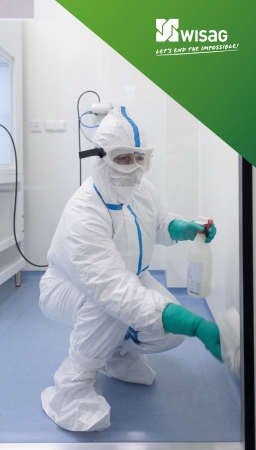Header
Ihr Suchergebnis
Sie recherchieren derzeit unangemeldet.Melden Sie sich an (Login) um den vollen Funktionsumfang der Datenbank nutzen zu können.
Sie suchen in allen Bereichen nach dem Autor Kemmerling S.
In der Rubrik Zeitschriften haben wir 3 Beiträge für Sie gefunden
-
Plastics in the pharmaceutical isolator
Rubrik: Technik
(Treffer aus pharmind, Nr. 03, Seite 268 (2024))
Kemmerling S | Ladwig T | Mittelviefhaus M
Plastics in the pharmaceutical isolator / Kemmerling et. al. • Plastics in isolator · Kemmerling S, Ladwig T, Mittelviefhaus M · SKAN AG, Allschwil
Pharmaceutical isolators are a common tool for the safe manufacturing and testing of pharmaceutical products by providing an aseptic environment for critical processes. Hydrogen peroxide (H 2 O 2 ) is used as the decontamination agent to achieve aseptic processing conditions. Any material present or introduced in the isolator chamber should be easy to be decontaminated, show good persistence to H 2 O 2 as well as various chemicals and not facilitate the growth of microorganisms.
-
How to test the resistance of bacterial spores to H2O2 on various materials
Rubrik: Technik
(Treffer aus pharmind, Nr. 02, Seite 179 (2024))
Kemmerling S | Mittelviefhaus M | Hommes G
How to test the resistance of bacterial spores to H2O2 on various materials / Kemmerling et al. • Resistance of bacterial spores · Kemmerling S, Mittelviefhaus M, Hommes G · SKAN AG, Allschwil
hydrogen peroxide bacterial spores surface decontamination D-value material properties Hydrogen peroxide (H 2 O 2 ) is an effective biocidal agent with a broad activity spectrum against microorganisms, which is primarily attributed to its strong oxidative properties. Moreover, H 2 O 2 has a low environmental impact as it decomposes into water and oxygen, leaving no harmful residues. H 2 O 2 based decontamination processes are thus widely applied in the pharmaceutical and other industries to inactivate or reduce the microbiological burden (bioburden) on surfaces. Generally, these processes make use of vapor-phase H 2 O 2 which is carried ...
-
Risk minimization by collecting and processing analytical data for process control in isolators
Rubrik: Technik
(Treffer aus pharmind, Nr. 03, Seite 308 (2023))
Ladwig T | Kemmerling S | Mittelviefhaus M
Risk minimization by collecting and processing analytical data for process control in isolators / Ladwig et al. • Risk minimization · Ladwig T, Kemmerling S, Mittelviefhaus M · SKAN AG, Allschwil (Switzerland)
To effectively minimize risks and increase the overall safety of processes performed inside an isolator system several requirements need to be fulfilled. This article outlines some of the key considerations and proposes appropriate tests that can be performed to ensure product and operator safety. Described testing includes assessment of material persistence, their absorptive properties, as well as ease of decontamination with hydrogen peroxide (H 2 O 2 ). Such tests will enable the selection of the most appropriate materials and documenting the fulfillment of requirements for aseptic processing. Further tests target the characterization of cleaning and decontamination processes. Understanding the ...







